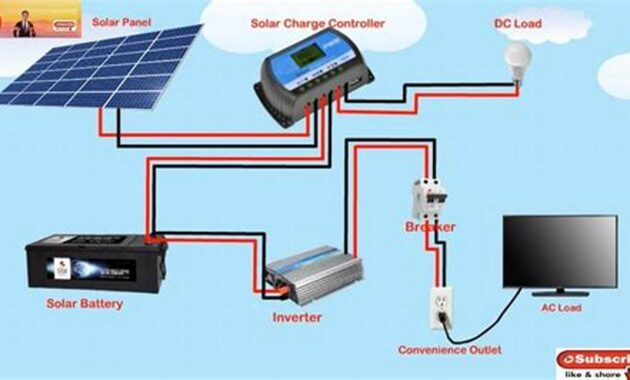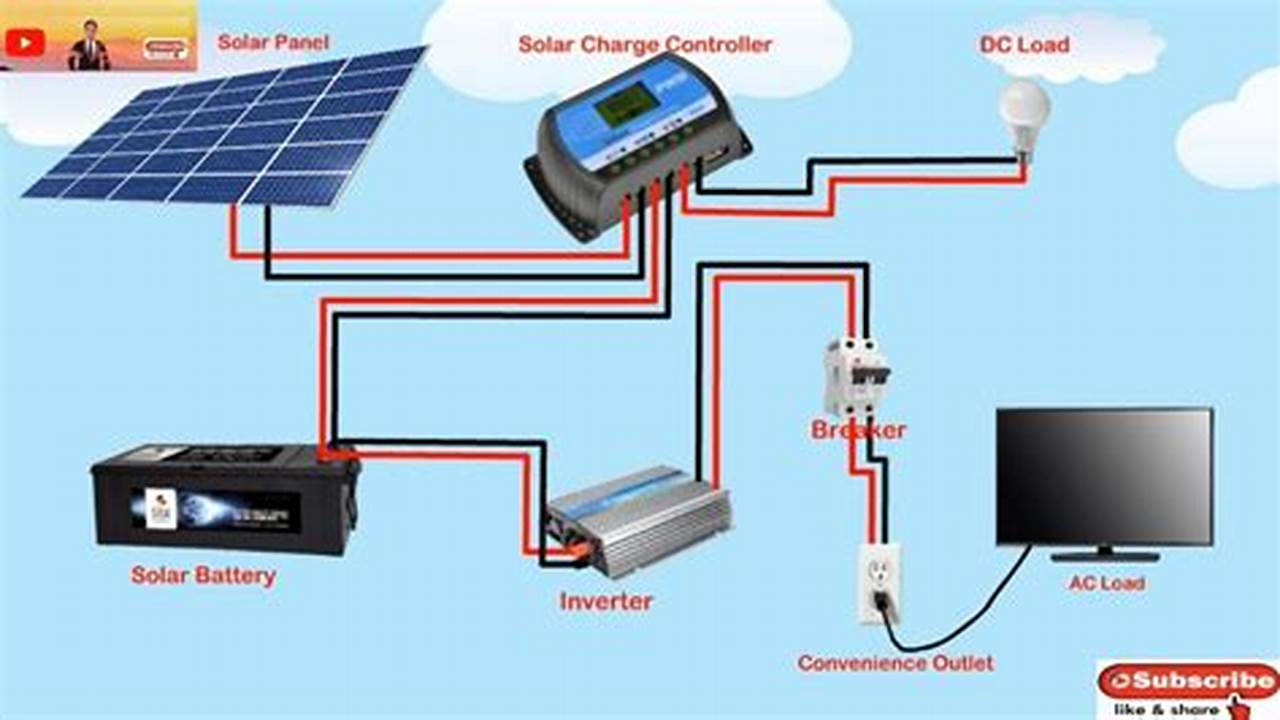
Setting up solar panels off grid involves utilizing photovoltaic (PV) modules to generate electricity from sunlight, making it an attractive option for remote areas or those seeking energy independence.
Off-grid solar systems offer numerous advantages, including reduced reliance on fossil fuels, lower energy costs, increased energy security, and environmental sustainability. Historically, off-grid solar systems were primarily used in remote locations, but advancements in technology and declining costs have made them increasingly viable for a wider range of applications.
To set up solar panels off grid, several key components are required: solar panels, a solar charge controller, batteries, an inverter, and mounting hardware. The solar panels convert sunlight into direct current (DC) electricity, which is then regulated by the charge controller and stored in the batteries. The inverter converts the stored DC electricity into alternating current (AC) electricity, which can be used to power appliances and devices.
FAQs on How to Set Up Solar Panels Off Grid
Setting up solar panels off grid can be a rewarding experience, but it also raises several common questions. Here are answers to some frequently asked questions:
Question 1: Is it difficult to set up solar panels off grid?
While some technical knowledge is required, setting up solar panels off grid has become more accessible with user-friendly kits and online resources. However, it’s always advisable to consult with a qualified professional for complex systems.
Question 2: How much do off-grid solar systems cost?
The cost of off-grid solar systems varies depending on factors such as system size, component quality, and installation complexity. However, costs have decreased significantly in recent years, making solar energy more affordable.
Question 3: How much maintenance do off-grid solar systems require?
Off-grid solar systems generally require minimal maintenance. Regular cleaning of solar panels and occasional battery checks are recommended to ensure optimal performance.
Question 4: Can off-grid solar systems power an entire house?
Yes, off-grid solar systems can power an entire house, provided they are sized appropriately. Careful consideration of energy consumption patterns and system capacity is crucial.
Question 5: What are the benefits of off-grid solar systems?
Off-grid solar systems offer numerous benefits, including energy independence, reduced reliance on fossil fuels, lower energy costs, and increased resilience against power outages.
Question 6: What are the challenges of off-grid solar systems?
One challenge is ensuring sufficient energy storage during periods of low sunlight. Additionally, off-grid systems require careful planning and maintenance to ensure reliable operation.
Summary: Off-grid solar systems provide a viable solution for energy independence and sustainability. While some technical expertise is needed, the process has become more accessible. Understanding the costs, maintenance requirements, and potential challenges is crucial for a successful off-grid solar installation.
Transition to the next article section: With a clear understanding of the basics, let’s delve into the detailed steps involved in setting up an off-grid solar system.
Tips for Setting Up Solar Panels Off Grid
Harnessing solar energy off grid requires careful planning and execution. Here are several tips to ensure a successful and efficient installation:
Tip 1: Determine Energy Needs:Calculate your daily and seasonal energy consumption to determine the system size required. Consider factors such as appliance usage, lighting, and potential future expansion.
Tip 2: Choose High-Quality Components:Invest in durable and efficient solar panels, charge controllers, batteries, and inverters. Reputable brands and warranties provide peace of mind and longevity.
Tip 3: Optimize Panel Placement:Position solar panels facing south (in the northern hemisphere) or north (in the southern hemisphere) for maximum sun exposure. Ensure there is no shading from trees or buildings.
Tip 4: Size Battery Bank Appropriately:Determine the battery capacity needed to meet your energy requirements during periods of low sunlight. Consider battery type, depth of discharge, and expected lifespan.
Tip 5: Use Energy-Efficient Appliances:Reduce energy consumption by using LED lighting, energy-efficient appliances, and implementing energy-saving habits.
Tip 6: Monitor System Performance:Regularly check system performance using monitoring devices or apps. This allows for early detection and correction of any issues.
Tip 7: Consider a Hybrid System:For increased reliability, consider a hybrid system that combines solar energy with a backup generator or grid connection. This ensures power availability during extended periods of low sunlight.
Tip 8: Seek Professional Advice:For complex systems or unique requirements, consult with a qualified solar installer. They can provide expert guidance and ensure a safe and efficient installation.
Summary: By following these tips, you can set up an off-grid solar system that meets your energy needs, maximizes efficiency, and provides reliable power for years to come.
Transition to the article’s conclusion: With a well-planned and executed off-grid solar system, you can enjoy the benefits of energy independence, sustainability, and peace of mind.
Conclusion
Setting up solar panels off grid empowers individuals and communities with energy independence, resilience, and sustainability. By understanding the components, planning the system, and following best practices, you can harness the sun’s energy to meet your electricity needs.
As technology advances and costs decline, off-grid solar systems become increasingly accessible and affordable. Embracing this clean and renewable energy source not only reduces our carbon footprint but also contributes to a more sustainable and decentralized energy future.
